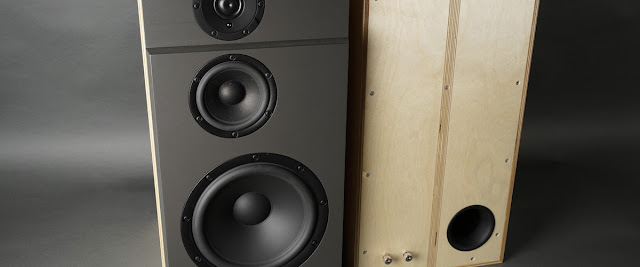The Ultimate Integrate Part 1.
I jumped on the DSP bandwagon as part of my 3-Way Retro build. I only planned to use it as an active XO and for some room correction. But working with the DSP and SigmaStudio left me with the feeling that it was somewhat under utilised in that role. I am very satisfied with my current setup of DIY analog pre- and power amps. Inserting a DSP in-between the two is far from optimal. An extra A/D to D/A conversion and hard to match gain structure to mention a few of the issues. I played with the idea of building a preamplifier built around the DSP. It would be easy to recreate the NOOLOM filters with a DSP and the digital volume control would track even better than my stepped attenuator. But I really didn't find much added value in recreating my analog PreFUNK with a DSP core.
That was my initial thought but it only took one idea to make a huge difference. I had used the DSP to correct my speakers for some defects in the response right? My ears are somewhat damaged so I have to correct them with hearing aids. My DSP got four output channels and this is where I started to see a totally new opportunity. Hearing aids are great but far from optimal for music listening. There is no way such smal devices can come close to the comparable huge membranes of my beloved AKG K550 headphones. But the hearing aids got DSP built in to compensate for my hearing deficits, something my AKG K550 does not. What if I would use two of the output channels to feed the speakers and the other two to feed a headphone amplifier? Would I be able to use the DSP to EQ my AKG K550 to a response curve countering my hearing deficits? I just had to try it out so I bough another DSP to experiment. I made my initial tests over Christmas and I was totally blown away. I used the audiogram I got from my audionome to recreate PEQ filters in SigmaStudio to counter my hearing deficits on my left and right ear. I then connected a switch through GPIO so I could toggle these PEQ filters on and off while listening. The difference was like night and day. I felt like I was 20 again listening with the filters on. I could fully enjoy music for the first time in years. This was truly a game changer for me so I decided to go forward and design an integrated amplifier around the DSP. Below is a logical block diagram of what I wanted to achieve.
The final question, what should it look like? I want to give this amp a proper enclosure. All metal with a brushed aluminium front panel. I want to keep it clean with sane defaults and a minimum of controls. It would leave the faceplate quite empty. Leave it like that or fill it with something? Big ass VU-meters? ;)
Concept has been bench tested and works better than I thought. Most of the needed boards are already built. VU-meters has been fabricated. Enclosure has been ordered but it seems to take time for them to deliver. CAD drawings for the face plate is done. I have managed to get a lot done since Christmas but it feels like I still have a long way to go...









